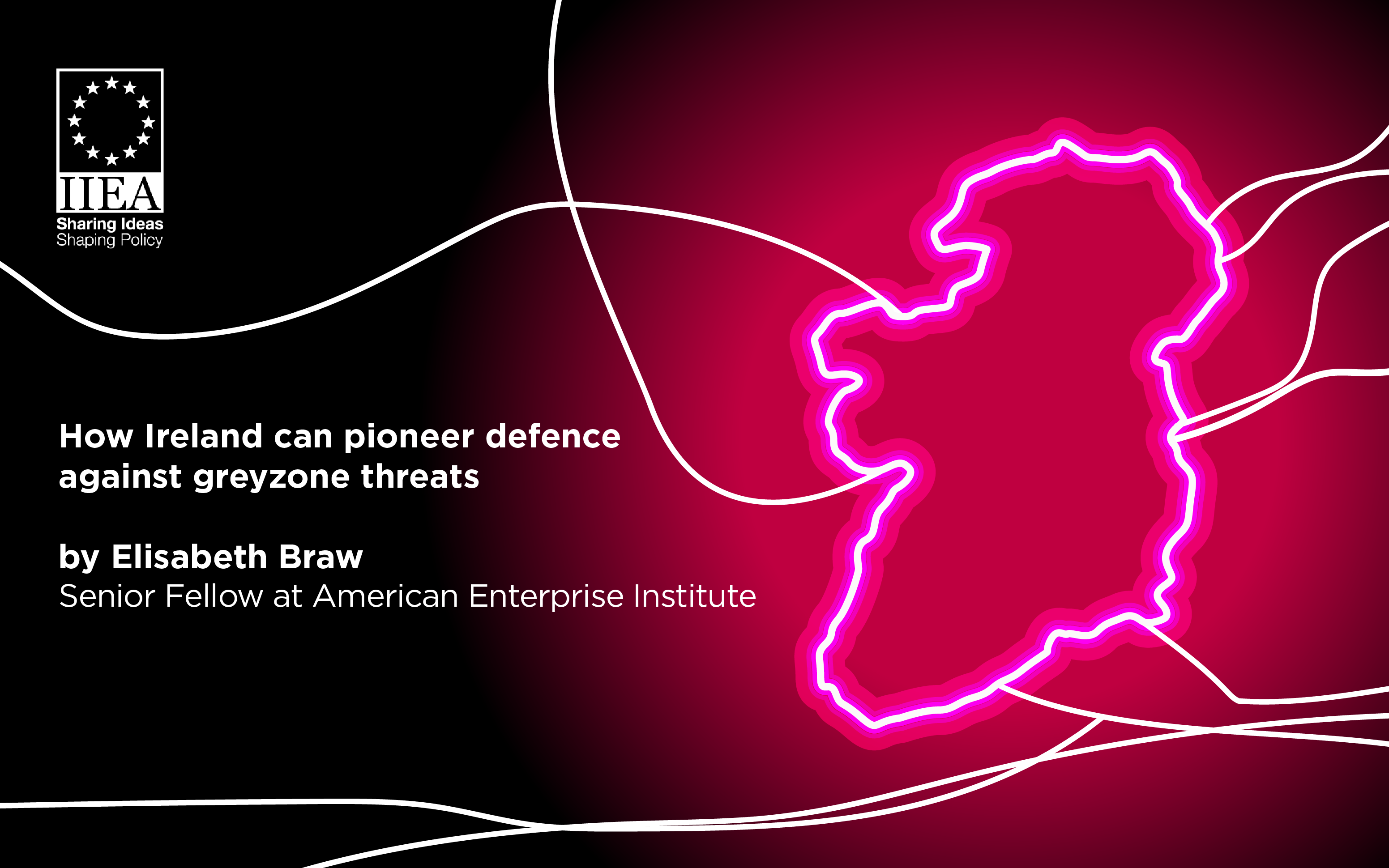How Ireland can pioneer defence against greyzone threats

Greyzone aggression can appear anywhere, anytime, utilising any tool. It was, however, hardly a surprise when the Admiral Grigorovich, accompanied by a small group of Russian merchant vessels, turned up in Ireland’s Exclusive Economic Zone (EEZ) last May and parked itself there. Russian vessels had turned up in Ireland’s EEZ before, and like the Admiral Grigorovich and her entourage, they had loitered above undersea cables. While foreign vessels have the right to enter other countries’ EEZs, the Russian ships were idling off the Irish coast to drive home the point that they could be there, right on top of the undersea cables on which Ireland depends, and that Ireland couldn’t stop them.
It was clear to the Irish public that Russian ships were up to no good. That devious nature, too, is part of greyzone aggression: an aggressor can simply exploit a democratic country’s openness. The Irish government’s feeble response to the visits, in turn, dramatically illustrated the defender’s dilemma when facing greyzone aggression. But Ireland can’t just wish greyzone aggression away. Like other countries, it needs to involve the whole of society in building its defence against this proliferating form of aggression.
“It is carefully monitored by Ireland and by others and that is an ongoing scenario where people track what’s happening within international waters and, indeed, within the Irish Exclusive Economic Zone (EEZ), which is quite large in itself,” Foreign Minister, Micheal Martin, told media a couple of days after the Admiral Grigorovich’s arrival, referring to the Russian activity off the Irish coast. He added that “I don’t see it as a threat, but it’s something we are very conscious of and we keep a very close eye on”. A good try, Mr Martin: the reality is that even if Ireland wanted to respond in a more muscular way than by keeping an eye on a maritime intruder its navy is so small that a muscular response would be illusory. Then again, not even a large Irish navy would have been able to chase the mysterious visitors away, because foreign vessels have the right to travel in other countries’ exclusive economic zones.
This is the nature of greyzone aggression: not only can it appear anywhere, anytime, using any tool, but it also exploits the openness of Western societies and their adherence to international rules. Take the Belarusian authorities’ weaponisation of migration that began in the summer of 2021, after the EU had sanctioned Belarus following its act of aviation piracy against a Ryanair flight travelling from Athens to Vilnius. All of a sudden people from countries such as Iraq began arriving at Lithuania’s border with Belarus. Then large numbers began appearing at Latvia’s border with Belarus, too, and especially at Poland’s border with the country. In 2020, a mere 37 people had illegally crossed into Lithuania, and even in the pre-Covid year of 2019 only 74 people did so. But Belarus had decided to harm its three neighbours and consequently the EU, and it did so by suddenly issuing lots of tourist visas to would-be asylum seekers and even helped bring them to the border. By the end of 2021, more than 8,100 people had attempted to cross the Belarus’ border with Lithuania, and by the end of 2022, the figure had risen further, with nearly 10,600 people trying to enter the country. The figures were similarly stark in Latvia and Poland. It was a move to destabilise Latvia, Lithuania and Poland and prove that their borders were unsafe – and to provoke a destructive migration debate within the EU. But as it wasn’t a military attack, there was no formula for how the three countries – and possibly others – should respond.
Greyzone aggression may only become visible at a stage when it’s too late to retaliate. The involvement of a state might be impossible to prove. The act may not be illegal but harmful in large concentration, as is the case with the dissemination of disinformation. What’s more, the fact that the West’s adversaries often use unethical or illegal actions in the greyzone means the targeted countries often can’t retaliate eye-for-an-eye in the greyzone. That, of course, means that Western countries often can’t even threaten retaliation in the greyzone and, as we know, deterrence only works if it’s credible.
That makes the other part of deterrence – deterrence by denial –essential. Indeed, resilience component is indispensable. By demonstrating that greyzone aggression won’t be able to cause as much harm as intended, potential target countries can change greyzone aggressors’ cost-benefit calculus. Countries can, for example, train their citizens in information literacy. They can educate citizens in how to conduct their daily lives if essential services like the internet are disrupted. Governments can team up with operators of undersea cables and other critical national infrastructure to regularly patrol sensitive installations: indeed, such patrols could be carried out by the operators, with coast guards and navies as a backup in case of provocative actions by unwanted visitors.
These are, in fact, actions that Ireland could easily undertake even without expanding its armed forces. To be sure, Ireland needs to grow its armed forces to provide its citizens with at least a basic level of protection against today’s military threats, but in the greyzone the government can achieve a considerable amount at little expense by involving the public in keeping the country safe. Ireland could, in fact, pioneer new models of greyzone defence. For that to happen, though, the government needs to communicate honestly with the public about the threats now facing the country. Statements like “we’re closely monitoring” no longer suffice as protection, nor do they convince anybody – the Irish public, the Russians or other greyzone aggressors.
